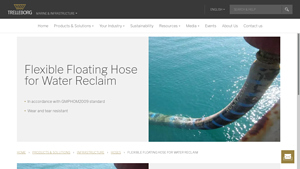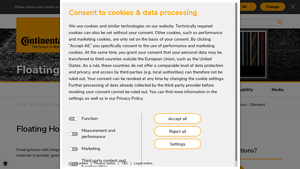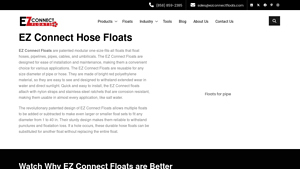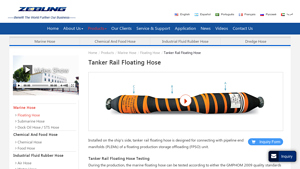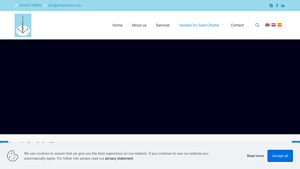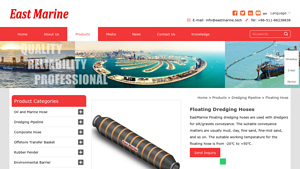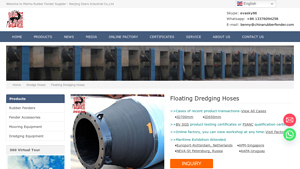Introduction: Navigating the Global Market for floating hose
In the dynamic landscape of global trade, sourcing reliable floating hoses is essential for businesses engaged in marine operations, oil and gas transfer, and water management. With increasing demands for safety, efficiency, and compliance with international standards, B2B buyers often face the challenge of selecting the right hoses that can withstand extreme conditions while ensuring operational reliability. This comprehensive guide addresses these challenges by exploring the various types of floating hoses, their diverse applications, and critical factors for supplier vetting.
From the loading and unloading of petroleum to the transfer of potable water and dredging operations, floating hoses play a pivotal role in multiple sectors. Buyers will gain insights into the latest technological advancements, material specifications, and industry standards such as GMPHOM2009, ensuring they make informed purchasing decisions. Additionally, the guide delves into cost considerations, helping businesses navigate budget constraints while prioritizing quality and safety.
Designed specifically for international B2B buyers from regions like Africa, South America, the Middle East, and Europe—including key markets like Saudi Arabia and Brazil—this guide empowers you to select the most suitable floating hoses for your operational needs. By providing actionable insights and expert recommendations, we aim to enhance your procurement strategy and support your business’s growth in the competitive global market.
Table Of Contents
- Top 7 Floating Hose Manufacturers & Suppliers List
- Introduction: Navigating the Global Market for floating hose
- Understanding floating hose Types and Variations
- Key Industrial Applications of floating hose
- 3 Common User Pain Points for ‘floating hose’ & Their Solutions
- Strategic Material Selection Guide for floating hose
- In-depth Look: Manufacturing Processes and Quality Assurance for floating hose
- Practical Sourcing Guide: A Step-by-Step Checklist for ‘floating hose’
- Comprehensive Cost and Pricing Analysis for floating hose Sourcing
- Alternatives Analysis: Comparing floating hose With Other Solutions
- Essential Technical Properties and Trade Terminology for floating hose
- Navigating Market Dynamics and Sourcing Trends in the floating hose Sector
- Frequently Asked Questions (FAQs) for B2B Buyers of floating hose
- Strategic Sourcing Conclusion and Outlook for floating hose
- Important Disclaimer & Terms of Use
Understanding floating hose Types and Variations
| Type Name | Key Distinguishing Features | Primary B2B Applications | Brief Pros & Cons for Buyers |
|---|---|---|---|
| Standard Floating Hose | Single carcass with buoyancy aids; suitable for basic applications | Loading/unloading crude oil, refueling vessels | Pros: Cost-effective, versatile. Cons: Limited in extreme conditions. |
| Double Carcass Floating Hose | Enhanced durability with an inner and outer layer; resistant to punctures | Transfer of hazardous materials, dredging operations | Pros: High safety standards, reduced risk of leaks. Cons: Higher initial investment. |
| Bunkering Hose | Designed for fuel transfer; often incorporates anti-static materials | Marine fuel transfer, ship bunkering | Pros: Safe for flammable liquids, robust construction. Cons: Specialized, may require specific fittings. |
| Potable Water Floating Hose | Made from food-grade materials; ensures safe drinking water transfer | Transfer of potable water to ships | Pros: Compliance with health regulations, safe for human consumption. Cons: Higher cost due to material standards. |
| Dredging Hose | Heavy-duty construction; designed to handle abrasive materials | Dredging operations, sediment transfer | Pros: Highly durable, capable of handling tough conditions. Cons: Weight can be a disadvantage for transport. |
What Are the Key Characteristics of Standard Floating Hoses?
Standard floating hoses are typically constructed with a single carcass design that incorporates buoyancy aids, allowing them to remain afloat while being used in various applications. They are versatile and cost-effective, making them suitable for general tasks such as loading and unloading crude oil or refueling vessels. When considering a standard floating hose, buyers should assess the operational conditions, as these hoses may not withstand extreme environmental factors or high mechanical loads.
How Do Double Carcass Floating Hoses Enhance Safety?
Double carcass floating hoses feature an inner and outer layer, which significantly enhances their durability and safety. This design minimizes the risk of leaks, making them ideal for transferring hazardous materials and during dredging operations where punctures could lead to environmental damage. Buyers should prioritize double carcass hoses when safety is paramount, despite their higher initial investment, as the long-term risk mitigation can justify the cost.
What Makes Bunkering Hoses Unique for Marine Fuel Transfer?
Bunkering hoses are specifically designed for the safe transfer of marine fuels and often include anti-static materials to prevent ignitions. Their robust construction ensures they can handle the rigors of marine environments. For businesses engaged in ship bunkering, selecting the right type of bunkering hose is critical. While they offer enhanced safety, buyers must also consider compatibility with existing equipment and fittings, as these hoses may require specialized components.
Why Are Potable Water Floating Hoses Essential for Safe Transfers?
Potable water floating hoses are crafted from food-grade materials that comply with health regulations, ensuring the safe transfer of drinking water. Their design prioritizes safety and hygiene, making them essential for operations involving potable water delivery to ships. Buyers should evaluate the certification of materials used in these hoses, as compliance with health standards is non-negotiable in ensuring public safety, despite the higher costs associated with these specialized hoses.
What Advantages Do Dredging Hoses Offer for Heavy-Duty Applications?
Dredging hoses are designed for heavy-duty applications, characterized by their ability to withstand abrasive materials and harsh environmental conditions. These hoses are particularly suitable for dredging operations where sediment transfer is required. While they provide excellent durability and performance, potential buyers should consider the weight of these hoses, as this can complicate transport and handling. Investing in a high-quality dredging hose is essential for companies focused on efficiency and reliability in challenging environments.
Key Industrial Applications of floating hose
| Industry/Sector | Specific Application of Floating Hose | Value/Benefit for the Business | Key Sourcing Considerations for this Application |
|---|---|---|---|
| Oil & Gas | Loading and unloading of crude oil in ports | Enhances operational efficiency and safety during transfers | Compliance with GMPHOM2009 standards; durability in harsh marine conditions |
| Marine Transportation | Refueling of vessels at sea | Minimizes downtime and enhances logistics capabilities | Customization for vessel types; resistance to UV and seawater |
| Dredging and Mining | Transfer of dredge spoil (sand and gravel) | Increases productivity by allowing continuous operation | Ability to withstand heavy mechanical loads; wear-resistant materials |
| Water Supply and Treatment | Transfer of potable water from shore to ship | Ensures safe and reliable water transport | Certification for potable water use; flexibility and buoyancy features |
| Construction and Infrastructure | Dewatering in construction sites | Reduces project delays and improves site safety | Adaptability to various terrains; resistance to abrasion and chemicals |
How is Floating Hose Used in Oil & Gas Applications?
In the oil and gas sector, floating hoses are crucial for the loading and unloading of crude oil at ports. These hoses allow for efficient transfer from oil tankers to storage facilities, ensuring that operations are conducted smoothly and safely. They are designed to handle extreme conditions, such as high pressure and corrosive environments, which are common in offshore operations. Buyers must prioritize hoses that comply with standards like GMPHOM2009 to guarantee reliability and safety during operations.
What Role Do Floating Hoses Play in Marine Transportation?
Floating hoses are extensively utilized for refueling vessels at sea, enabling efficient fuel transfer without the need for docking. This capability minimizes vessel downtime and enhances the logistics of marine operations. For international buyers, it is essential to consider customization options that fit various vessel types, as well as the hose’s resistance to UV radiation and seawater, to ensure long-lasting performance and safety in marine environments.
How Are Floating Hoses Applied in Dredging and Mining?
In dredging and mining, floating hoses facilitate the transfer of dredge spoil, such as sand and gravel, from dredgers to shore. This application is vital for maintaining productivity and enabling continuous operation. Buyers should focus on hoses that can withstand heavy mechanical loads and are constructed from wear-resistant materials to ensure longevity and reliability during intensive use.
Why Are Floating Hoses Important for Water Supply and Treatment?
Floating hoses are employed in the transfer of potable water from shore to ships, ensuring that water supply operations are conducted safely and efficiently. This application is particularly critical in regions with limited freshwater resources. Buyers must ensure that the hoses are certified for potable water use and have features that enhance flexibility and buoyancy, which are essential for adapting to various water conditions.
How Do Floating Hoses Benefit Construction and Infrastructure Projects?
In construction, floating hoses are used for dewatering applications, which help manage water levels on construction sites. By facilitating effective water removal, these hoses reduce project delays and enhance site safety. For international B2B buyers, it is crucial to source hoses that can adapt to different terrains and are resistant to abrasion and chemicals, ensuring they can withstand the demanding conditions often found on construction sites.
3 Common User Pain Points for ‘floating hose’ & Their Solutions
Scenario 1: Dealing with Hose Durability in Extreme Environments
The Problem: B2B buyers often face significant challenges when sourcing floating hoses that can withstand harsh conditions, such as extreme temperatures, high pressures, and corrosive environments. For example, companies operating in regions with intense UV radiation or saltwater exposure may find that standard hoses degrade quickly, leading to frequent replacements and costly downtime. The inability to rely on durable hoses not only affects operational efficiency but also raises safety concerns due to potential leaks or failures.
The Solution: To address durability issues, buyers should prioritize hoses that meet specific industry standards, such as GMPHOM2009, which ensure high performance and reliability in demanding conditions. When sourcing floating hoses, look for options with wear-resistant liners and robust outer constructions that include nonabsorbable materials. Additionally, inquire about the manufacturer’s testing protocols and historical performance in similar environments. Consider establishing partnerships with suppliers who offer customization to create hoses tailored to your specific operational requirements, ensuring that they can handle the unique challenges of your working conditions.
Scenario 2: Managing Visibility and Safety of Floating Hoses
The Problem: Another common pain point is ensuring the visibility of floating hoses in busy marine environments, where they can pose navigational hazards to vessels. Poor visibility can lead to accidents, such as propeller damage or collisions, resulting in costly repairs and operational delays. This is especially critical in regions with heavy marine traffic or during night operations, where the risk of accidents is heightened.
The Solution: To enhance visibility, buyers should invest in floating hoses that come equipped with integrated buoyancy aids and reflective materials. Look for hoses that feature bright colors or fluorescent coatings that improve visibility against the water’s surface. Additionally, consider the use of custom floats or visibility markers that can be attached to the hoses for further identification. Training your crew on the proper handling and management of floating hoses can also mitigate risks; regular safety drills and clear operational protocols can help reinforce the importance of maintaining visibility.
Scenario 3: Ensuring Compatibility with Existing Infrastructure
The Problem: Compatibility issues often arise when integrating new floating hoses with existing infrastructure, such as pumps and connectors. Buyers may find that standard hose fittings do not align with their equipment, leading to inefficiencies and potential leaks. This challenge can be particularly prominent for companies in diverse industries, such as oil and gas, where specialized equipment is used.
The Solution: To overcome compatibility challenges, it is essential for buyers to conduct a thorough assessment of their existing infrastructure before selecting floating hoses. Engage with suppliers who offer a range of customizable options, including various diameters and fitting types, to ensure compatibility with your current systems. Additionally, requesting detailed specifications and compatibility charts from manufacturers can aid in making informed purchasing decisions. Establishing a feedback loop with your supplier regarding your operational needs can foster better product development and ensure that the hoses you select integrate seamlessly with your equipment, reducing the risk of costly operational disruptions.
Strategic Material Selection Guide for floating hose
When selecting materials for floating hoses, it’s crucial to consider the specific application requirements, environmental conditions, and regulatory standards relevant to the target markets. Below, we analyze four common materials used in the manufacturing of floating hoses, focusing on their properties, advantages, disadvantages, and considerations for international B2B buyers.
What Are the Key Properties of Rubber in Floating Hoses?
Rubber, particularly synthetic variants like neoprene and EPDM (ethylene propylene diene monomer), is widely used in floating hoses due to its excellent flexibility and durability. Rubber hoses typically have a temperature rating of -30°C to 80°C and can withstand moderate pressures, making them suitable for various applications, including oil and water transfer. Additionally, rubber exhibits good resistance to UV radiation and ozone, which is essential for outdoor applications.
Pros: Rubber is known for its resilience and ability to absorb impacts, making it ideal for high-stress environments. It is also relatively cost-effective and easy to manufacture.
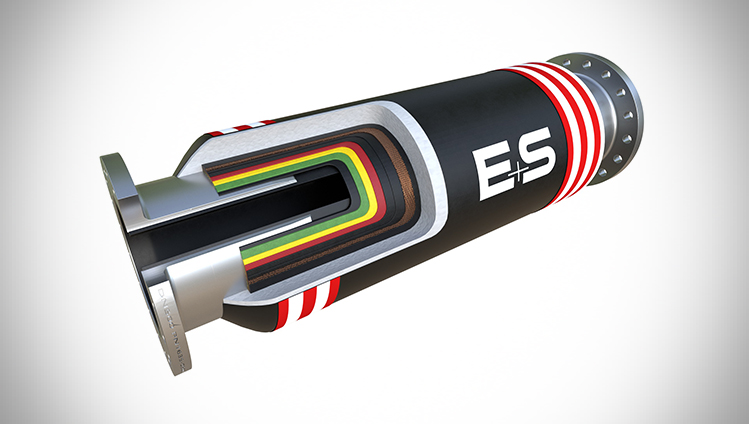
Illustrative image related to floating hose
Cons: However, rubber can be susceptible to certain chemicals, which may limit its use in specific applications. The manufacturing process can also be complex, leading to longer lead times.
Impact on Application: Rubber’s compatibility with various media makes it a versatile choice, but buyers must ensure that the specific type of rubber selected is suitable for the intended fluid.
How Does Polyurethane Enhance Floating Hose Performance?
Polyurethane is another popular material for floating hoses, known for its high abrasion resistance and flexibility. It typically operates effectively within a temperature range of -40°C to 90°C and offers excellent pressure ratings, making it suitable for demanding applications like dredging and oil transfer.
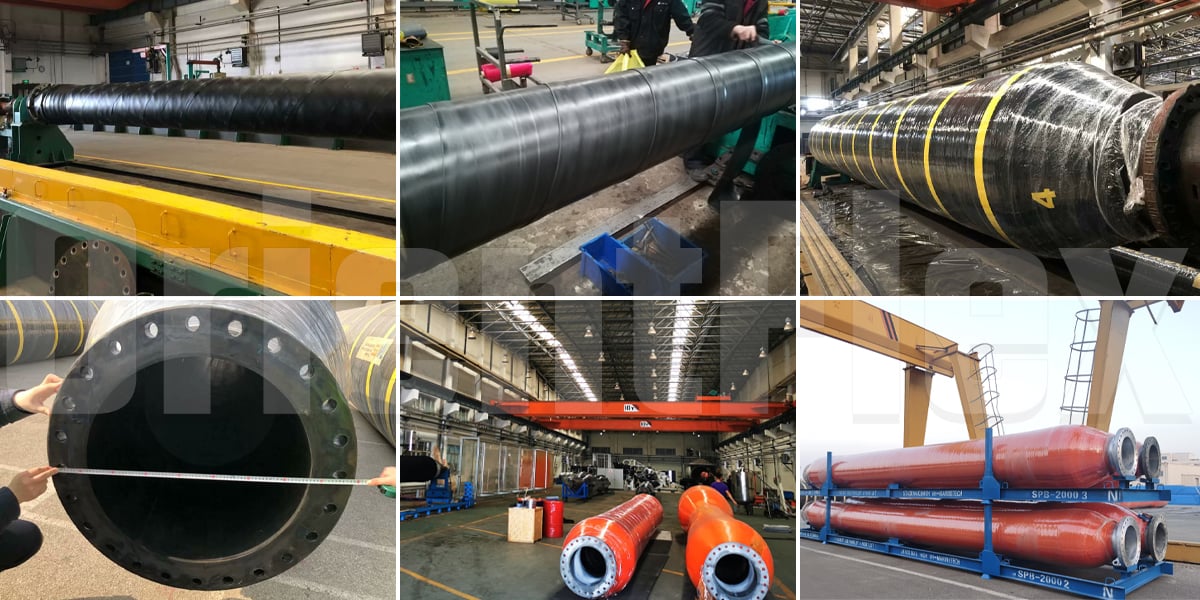
Illustrative image related to floating hose
Pros: The key advantage of polyurethane is its exceptional durability and resistance to wear and tear, which extends the hose’s lifespan. It is also lightweight, which simplifies handling and installation.
Cons: On the downside, polyurethane can be more expensive than rubber and may require specialized manufacturing techniques, increasing production complexity.
Impact on Application: Polyurethane’s chemical resistance allows for compatibility with a broader range of fluids, making it a preferred choice for more aggressive media.
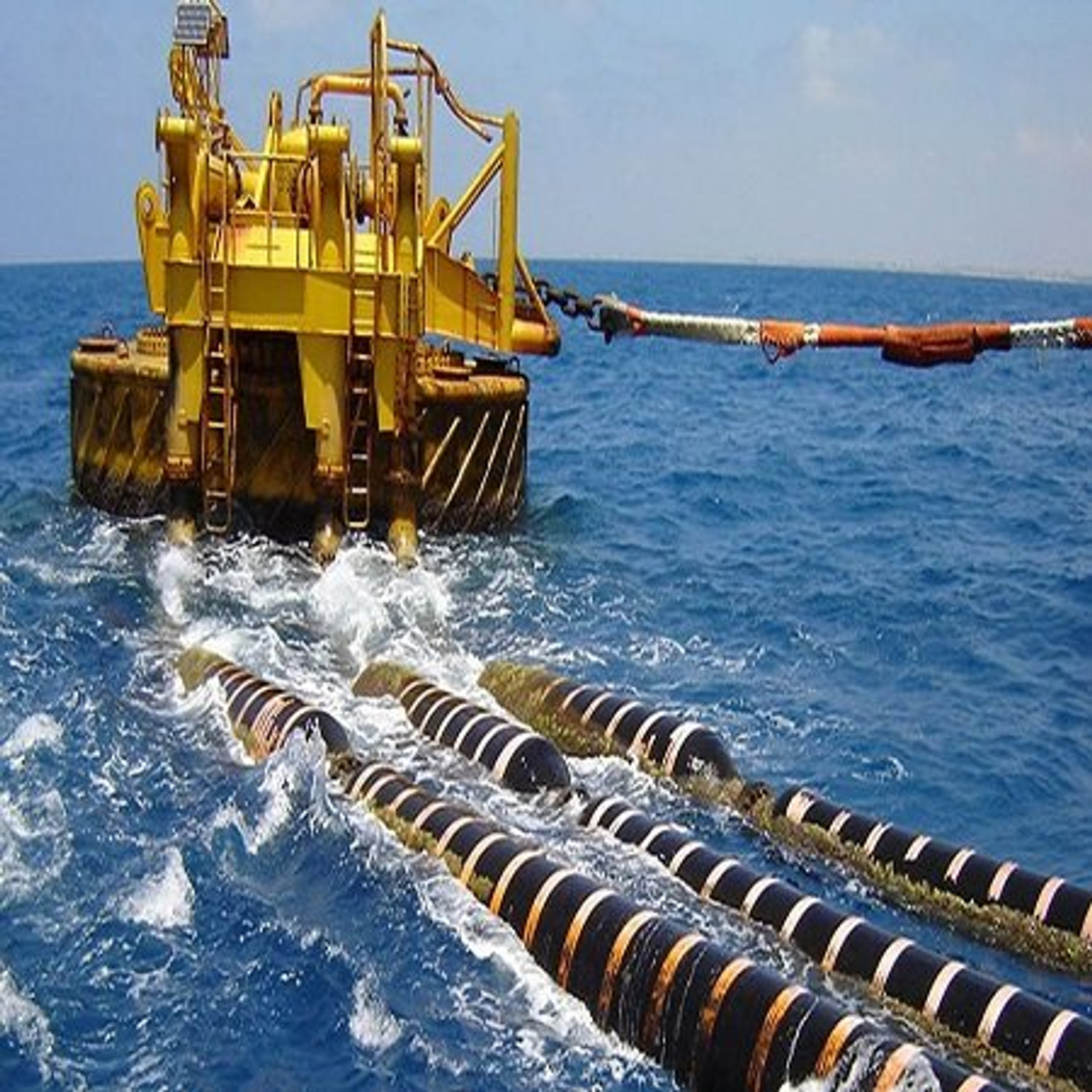
Illustrative image related to floating hose
Why Choose PVC for Floating Hoses?
Polyvinyl chloride (PVC) is often used in floating hoses due to its affordability and decent performance characteristics. PVC hoses can handle temperatures from -10°C to 60°C and are generally suitable for low-pressure applications, such as potable water transfer.
Pros: The primary advantage of PVC is its cost-effectiveness and ease of production. It is also lightweight, which can reduce shipping costs.
Cons: However, PVC hoses may not perform well under extreme temperatures or high pressures, limiting their application scope. Additionally, they can be less durable than rubber or polyurethane.
Impact on Application: PVC is typically used for less demanding applications, and buyers should be cautious about its limitations regarding chemical compatibility and mechanical stress.
What Are the Benefits of Composite Materials in Floating Hoses?
Composite materials, which often combine rubber and thermoplastics, are becoming increasingly popular in the floating hose market. These hoses can withstand a wider range of temperatures and pressures, often rated from -20°C to 100°C.
Pros: The key advantage of composite hoses is their superior flexibility and lightweight nature, making them easy to handle. They also offer excellent chemical resistance, suitable for various applications.
Cons: The downside is that composite hoses can be more expensive due to the complex manufacturing processes involved.
Impact on Application: Their versatility allows them to be used in a variety of industries, including oil and gas, but buyers must ensure compliance with international standards.
Summary Table of Material Selection for Floating Hoses
| Material | Typical Use Case for Floating Hose | Key Advantage | Key Disadvantage/Limitation | Relative Cost (Low/Med/High) |
|---|---|---|---|---|
| Rubber | Oil and water transfer | Excellent flexibility and durability | Susceptible to certain chemicals | Medium |
| Polyurethane | Dredging and oil transfer | High abrasion resistance | Higher cost and complex manufacturing | High |
| PVC | Potable water transfer | Cost-effective and lightweight | Limited pressure and temperature range | Low |
| Composite | Oil and gas applications | Superior flexibility and chemical resistance | Higher cost due to complex manufacturing | High |
This strategic material selection guide provides B2B buyers with critical insights into the properties and applications of various materials used in floating hoses, enabling informed decisions tailored to specific operational needs and compliance requirements in diverse international markets.
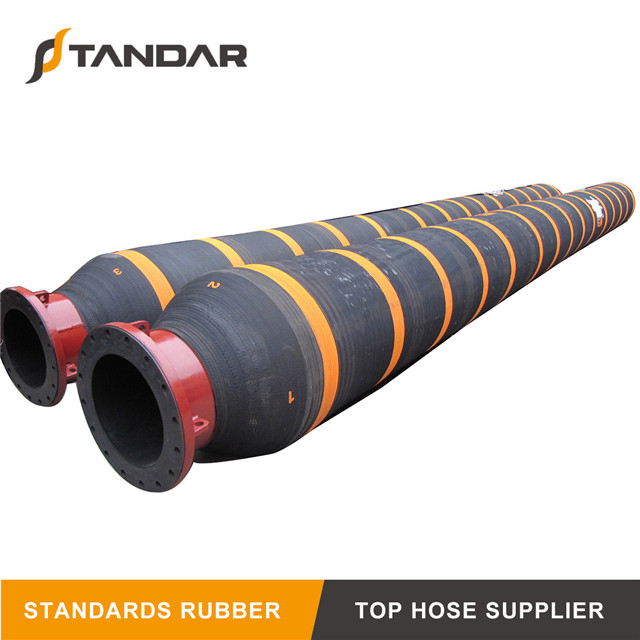
Illustrative image related to floating hose
In-depth Look: Manufacturing Processes and Quality Assurance for floating hose
What Are the Key Stages in the Manufacturing Process of Floating Hoses?
The manufacturing process of floating hoses is a meticulous endeavor that ensures the final product meets the demanding specifications required for marine applications. The primary stages in the production include material preparation, forming, assembly, and finishing.
Material Preparation
The first step involves sourcing high-quality raw materials, typically rubber and synthetic compounds that offer excellent durability and resistance to various environmental factors. Manufacturers often utilize advanced elastomers that can withstand extreme conditions such as UV radiation, saltwater exposure, and mechanical stress. The materials undergo rigorous testing to ensure they meet industry standards before moving to the next phase.
Forming the Hose
Once the materials are prepared, they are subjected to forming processes that shape the hoses. This can involve extrusion, where the rubber is forced through a die to create long tubes, or calendaring, which produces sheets of rubber for further processing. For floating hoses, a critical aspect is the integration of buoyant materials, such as non-absorbent foam, which is added during this stage. The forming process often employs cutting-edge technology, including computer numerical control (CNC) machines, to ensure precision in dimensions and tolerances.
Assembly of Components
After forming, the hoses enter the assembly phase, where various components are combined. This may include the attachment of floats, connectors, and other necessary fittings. Each component is carefully selected based on its compatibility with the hose’s intended application, whether for oil transfer, dredging, or potable water transport. Manufacturers typically use advanced bonding techniques, such as vulcanization, to enhance the integrity and durability of the assembled products.
Finishing Touches
The final stage in manufacturing involves finishing processes that prepare the hoses for delivery. This includes surface treatments to improve resistance to abrasion and chemical damage, as well as quality checks to ensure all specifications are met. The hoses may also undergo color coding or branding as per customer requirements, enhancing visibility in the water.
How Is Quality Assurance Implemented in Floating Hose Manufacturing?
Quality assurance is a critical component of the manufacturing process for floating hoses, ensuring that the final products are safe, reliable, and compliant with international standards.
What International Standards Are Relevant for Floating Hoses?
Manufacturers often adhere to several international standards, such as ISO 9001, which outlines requirements for quality management systems. Additionally, industry-specific standards like the American Petroleum Institute (API) standards or the European CE marking may apply, particularly in sectors involving oil and gas or maritime operations. Compliance with these standards not only assures product quality but also facilitates acceptance in global markets.
What Are the Key Quality Control Checkpoints?
Quality control (QC) encompasses several checkpoints throughout the manufacturing process:
- Incoming Quality Control (IQC): This initial checkpoint assesses raw materials upon arrival to ensure they meet specified standards.
- In-Process Quality Control (IPQC): During manufacturing, regular inspections are conducted to monitor processes and identify any deviations from quality standards.
- Final Quality Control (FQC): This final stage involves comprehensive testing of the finished hoses, assessing factors such as pressure resistance, buoyancy, and overall durability.
Testing methods may include hydrostatic testing, tensile strength assessments, and abrasion resistance tests, among others. Such rigorous evaluations are crucial for maintaining the safety and reliability of floating hoses in demanding environments.
How Can B2B Buyers Verify the Quality Control Processes of Suppliers?
For B2B buyers, especially those from regions like Africa, South America, the Middle East, and Europe, verifying the quality control processes of suppliers is paramount. Here are actionable steps to ensure the reliability of floating hose manufacturers:
Conducting Supplier Audits
Regular audits of suppliers can provide valuable insights into their manufacturing processes and quality assurance practices. Buyers should request access to audit reports and certifications that demonstrate compliance with international standards. This transparency can significantly reduce the risk of receiving subpar products.
Requesting Quality Reports
Buyers should also seek quality reports that detail the results of inspections and tests conducted during the manufacturing process. These reports should outline any issues identified and the corrective actions taken, providing confidence in the supplier’s commitment to quality.
Engaging Third-Party Inspection Services
Utilizing third-party inspection services can offer an unbiased evaluation of the supplier’s quality assurance practices. These services can conduct independent assessments of the manufacturing process and product quality, providing an additional layer of assurance for buyers.
What Nuances Should International Buyers Consider in Quality Control?
When engaging with international suppliers, particularly from emerging markets, several nuances must be considered:
- Cultural Differences: Different countries may have varying approaches to quality assurance and manufacturing standards. Understanding these cultural differences can help in fostering better communication and collaboration.
- Regulatory Compliance: Buyers must ensure that suppliers are compliant with local regulations and international standards relevant to their specific market. This is especially critical for industries like oil and gas, where compliance is closely monitored.
- Logistical Considerations: The transportation and handling of floating hoses can impact their quality. Buyers should discuss logistics with suppliers to ensure that products are stored and shipped in conditions that preserve their integrity.
By understanding these manufacturing processes and quality assurance protocols, B2B buyers can make informed decisions when sourcing floating hoses, ensuring they partner with reliable suppliers who meet their operational needs.
Practical Sourcing Guide: A Step-by-Step Checklist for ‘floating hose’
In this guide, we will walk you through a comprehensive step-by-step checklist for sourcing floating hoses effectively. Floating hoses are critical components in various maritime applications, including oil transfer, dredging, and water management. Ensuring that you select the right product for your needs is vital for operational safety and efficiency.
Step 1: Define Your Technical Specifications
Establishing clear technical specifications is the foundation of your procurement process. Consider the operational environment, such as water salinity, temperature, and potential exposure to UV radiation. Identify requirements for pressure ratings, buoyancy, and chemical compatibility, as these factors directly influence the hose’s performance and longevity.
- Pressure Ratings: Assess the maximum and minimum pressure the hose will encounter.
- Material Compatibility: Ensure the hose materials can handle the fluids being transported.
Step 2: Conduct Market Research
Understanding the market landscape will help you identify potential suppliers and products that meet your specifications. Research various manufacturers and their offerings, focusing on those with a proven track record in the floating hose segment.
- Industry Reports: Look for reports or analyses that highlight leading brands and emerging trends.
- Trade Shows: Attend industry exhibitions to see products firsthand and meet suppliers.
Step 3: Evaluate Supplier Certifications
Before making a commitment, it’s essential to verify that suppliers hold the necessary certifications and adhere to industry standards. Look for compliance with GMPHOM2009 or other relevant regulations, which ensure product safety and quality.
- Certification Verification: Request documentation proving compliance with international standards.
- Quality Assurance Processes: Inquire about their quality control measures during manufacturing.
Step 4: Request Samples for Testing
Once you have shortlisted potential suppliers, request samples of the floating hoses for physical evaluation. Testing the samples allows you to assess the product’s quality, flexibility, and durability under simulated operational conditions.
- Performance Testing: Check for wear resistance, buoyancy, and overall construction quality.
- Compatibility Testing: Ensure the hose performs well with the specific fluids it will be handling.
Step 5: Compare Pricing and Terms
After evaluating samples, compare pricing structures and terms of service from different suppliers. Keep in mind that the cheapest option may not always be the best; consider the total cost of ownership, including maintenance and potential downtime.
- Bulk Discounts: Inquire about pricing for larger orders or long-term contracts.
- Delivery Terms: Understand shipping costs and lead times to avoid delays.
Step 6: Review Customer Feedback and Case Studies
Investigating customer feedback and case studies can provide valuable insights into the supplier’s reliability and product performance in real-world applications. Look for testimonials from companies in similar industries and regions.
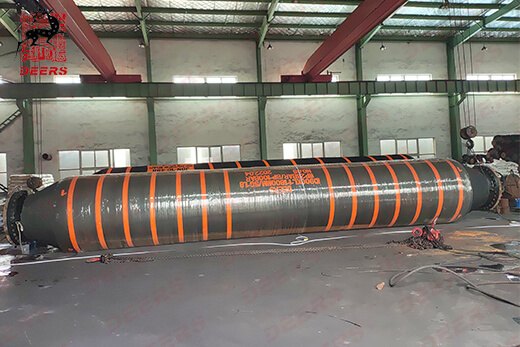
Illustrative image related to floating hose
- Online Reviews: Search for reviews on industry forums or supplier websites.
- Direct References: Request references and reach out to previous clients for firsthand accounts.
Step 7: Finalize the Procurement Agreement
Once you’ve selected a supplier, ensure that all terms and conditions are clearly outlined in a procurement agreement. This should cover delivery schedules, warranties, and after-sales support to safeguard your investment.
- Contract Clarity: Clearly define the scope of work and responsibilities for both parties.
- Warranty and Support: Understand the terms for warranty claims and available support services.
Following this checklist will empower you to make informed decisions when sourcing floating hoses, ultimately enhancing your operational efficiency and safety in maritime applications.
Comprehensive Cost and Pricing Analysis for floating hose Sourcing
What Are the Key Cost Components in Floating Hose Manufacturing?
When sourcing floating hoses, understanding the cost structure is essential for effective budget management. The primary components influencing the overall cost include materials, labor, manufacturing overhead, tooling, quality control (QC), logistics, and supplier margins.
-
Materials: The choice of materials significantly impacts the cost. High-quality rubber compounds, wear-resistant linings, and specialized buoyancy materials are often more expensive but essential for durability and performance, especially in extreme conditions.
-
Labor: Skilled labor is required for the manufacturing process, including assembly and quality checks. Labor costs can vary by region, with countries offering lower wage rates potentially providing cost advantages.
-
Manufacturing Overhead: This encompasses all indirect costs related to production, including utilities, facility maintenance, and administrative expenses. Efficient manufacturing processes can help reduce overhead costs.
-
Tooling: Custom tooling may be necessary for specific designs or sizes, which can add to initial costs. However, investing in quality tooling can enhance production efficiency and reduce long-term costs.
-
Quality Control: Rigorous QC processes are critical to ensure the hoses meet industry standards (e.g., GMPHOM2009). This can add to costs but is essential for minimizing defects and ensuring safety.
-
Logistics: Shipping costs can vary significantly based on distance and mode of transport. International buyers should consider the full logistics cost, including import duties and taxes, when calculating total expenses.
-
Supplier Margin: Suppliers typically add a margin on top of their costs, which can vary based on their pricing strategy, market conditions, and the level of service they provide.
How Do Pricing Influencers Affect Floating Hose Costs?
Several factors can influence the pricing of floating hoses, making it essential for buyers to understand these nuances to negotiate effectively.
-
Volume/MOQ: Purchasing in larger volumes often leads to lower per-unit prices due to economies of scale. Establishing a minimum order quantity (MOQ) can also impact pricing and availability.
-
Specifications and Customization: Custom hoses designed for specific applications can incur higher costs due to the need for specialized materials and manufacturing processes. Buyers should clearly define their requirements to avoid unexpected costs.
-
Quality and Certifications: Hoses that meet stringent quality certifications may cost more upfront but can lead to lower maintenance costs and increased reliability. Buyers should weigh the initial investment against potential long-term savings.
-
Supplier Factors: The reputation and reliability of the supplier can impact pricing. Established suppliers with a history of quality and service may charge more, but they often provide better support and lower risk.
-
Incoterms: Understanding Incoterms is crucial for international buyers. Terms like FOB (Free on Board) or CIF (Cost, Insurance, and Freight) can significantly affect the overall landed cost of the product.
What Are Some Negotiation Tips for B2B Buyers in Floating Hose Sourcing?
To optimize costs and ensure a successful purchasing experience, buyers should consider the following negotiation tips:
-
Conduct Market Research: Familiarize yourself with the market prices and trends for floating hoses to establish a baseline for negotiations.
-
Leverage Volume Discounts: If possible, consolidate orders to maximize volume and negotiate better pricing.
-
Assess Total Cost of Ownership (TCO): Beyond initial purchase costs, evaluate the TCO, including maintenance, logistics, and potential downtime, to make informed decisions.
-
Request Samples: Before committing to large orders, request samples to assess quality and ensure the product meets specifications.
-
Build Relationships: Establishing a strong relationship with suppliers can lead to better terms, improved service, and potential discounts in future transactions.
-
Be Flexible: If a supplier cannot meet your price, consider discussing alternative options, such as adjusting specifications or payment terms to find common ground.
Conclusion: Why Is It Important to Understand Pricing Nuances for International Buyers?
Understanding the pricing nuances is vital for international B2B buyers, particularly those from regions like Africa, South America, the Middle East, and Europe. Factors such as local economic conditions, currency fluctuations, and trade regulations can significantly impact costs. Buyers must conduct thorough due diligence and maintain clear communication with suppliers to navigate these complexities effectively.
Disclaimer: Prices and terms mentioned are indicative and subject to change based on market conditions and supplier negotiations. Always request updated quotes and terms from suppliers before finalizing any agreements.
Alternatives Analysis: Comparing floating hose With Other Solutions
Exploring Alternative Solutions to Floating Hose Technology
When evaluating solutions for fluid transfer in marine and industrial applications, floating hoses stand out for their reliability and performance in challenging environments. However, various alternatives exist, each with unique benefits and drawbacks. This analysis compares floating hoses with two viable alternatives: rigid piping systems and flexible pipelines.
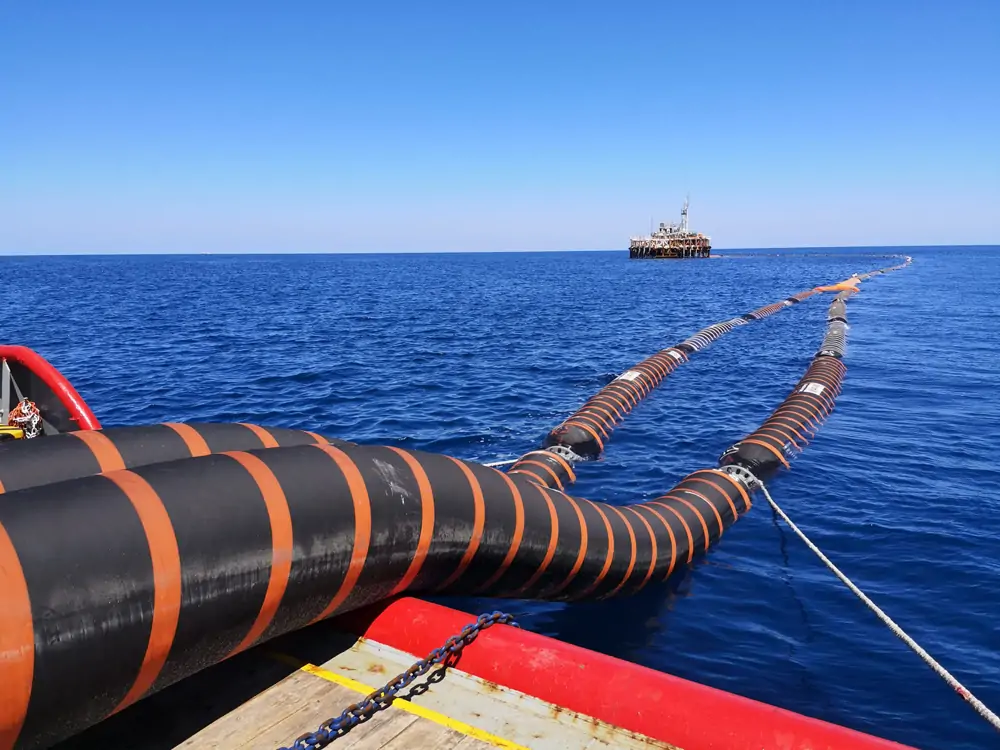
Illustrative image related to floating hose
Comparison Table
| Comparison Aspect | Floating Hose | Rigid Piping System | Flexible Pipeline |
|---|---|---|---|
| Performance | High flexibility, suitable for dynamic conditions | Stable but limited to fixed installations | Excellent adaptability in varied terrains |
| Cost | Moderate initial cost, but high durability | High installation costs, low maintenance | Moderate costs, may require frequent replacement |
| Ease of Implementation | Quick deployment, minimal infrastructure needed | Complex installation, requires skilled labor | Relatively easy to install, requires support structures |
| Maintenance | Low maintenance, requires periodic inspection | Low maintenance, but repairs can be costly | Higher maintenance needs, especially in harsh conditions |
| Best Use Case | Marine fluid transfer, dredging operations | Permanent installations in fixed locations | Temporary setups, adaptable to various environments |
Detailed Breakdown of Alternatives
Rigid Piping Systems
Rigid piping systems are often chosen for their structural integrity and durability. These systems are ideal for fixed installations where fluid transfer occurs between established points, such as in refineries or chemical plants. While they offer low maintenance and longevity, the initial setup can be costly and complex, requiring specialized labor. Additionally, they lack the flexibility to adapt to changing conditions, which can be a significant drawback in dynamic environments like marine operations.
Flexible Pipelines
Flexible pipelines, often made from advanced composite materials, provide a middle ground between rigid systems and floating hoses. Their adaptability allows for installation in varied terrains and conditions, making them suitable for both temporary and semi-permanent applications. However, they may require more frequent maintenance and inspections compared to floating hoses due to wear from environmental factors. Their initial costs can be moderate, but ongoing maintenance can increase overall expenses over time.
Conclusion: Choosing the Right Solution for Your Needs
Selecting the appropriate fluid transfer solution hinges on various factors, including operational requirements, budget, and environmental conditions. Floating hoses are particularly advantageous for marine applications due to their ability to withstand dynamic forces and harsh weather while remaining easily deployable. Rigid piping systems are ideal for stationary setups requiring minimal maintenance, whereas flexible pipelines serve well in temporary applications or areas with challenging terrains. By carefully evaluating these aspects, B2B buyers can make informed decisions that align with their operational needs and financial considerations.
Essential Technical Properties and Trade Terminology for floating hose
What Are the Key Technical Properties of Floating Hose?
Floating hoses are engineered for demanding applications, particularly in marine environments. Understanding their technical properties is crucial for B2B buyers looking to invest in reliable and effective solutions. Here are some of the essential specifications to consider:
-
Material Grade
Floating hoses are typically made from high-quality rubber or thermoplastic elastomers. These materials must be resistant to abrasion, UV radiation, and seawater corrosion. The choice of material directly impacts the hose’s durability and lifespan, making it vital for industries like oil and gas, where hoses are exposed to harsh conditions. -
Buoyancy
A critical feature of floating hoses is their buoyancy, which is achieved through the incorporation of floats or specialized foam within the hose construction. This property ensures that the hose remains on the surface of the water, preventing damage from ship propellers and facilitating easier handling during loading and unloading operations. -
Pressure and Temperature Tolerance
Floating hoses must withstand varying pressures and temperatures depending on their application. Specifications usually include maximum working pressure (MWP) and temperature ranges, which are essential for ensuring that the hose can handle the intended fluid transfer without failure, especially in high-demand scenarios. -
Wear Resistance
The internal lining of floating hoses is designed to resist wear from the transported materials, whether they are crude oil, potable water, or dredged materials. A wear-resistant liner enhances the hose’s longevity, reducing the frequency of replacements and maintenance, which is a crucial consideration for cost management in long-term projects. -
Length and Diameter
Floating hoses come in various lengths and diameters tailored to specific applications. Accurate sizing is essential for compatibility with existing systems and ensuring optimal flow rates. Custom lengths may be required for unique projects, emphasizing the need for suppliers who can accommodate bespoke requests. -
Testing Standards
Many floating hoses are manufactured and tested according to established industry standards, such as GMPHOM2009. Compliance with these standards ensures that the hoses meet safety and performance criteria, providing peace of mind to B2B buyers regarding the quality and reliability of their investment.
What Are the Common Trade Terms Used in the Floating Hose Industry?
Familiarity with industry jargon can greatly enhance communication between buyers and suppliers. Here are some key terms you should know:
-
OEM (Original Equipment Manufacturer)
An OEM refers to a company that produces parts or equipment that may be marketed by another manufacturer. In the context of floating hoses, an OEM might provide specialized hose solutions tailored to specific operational needs. -
MOQ (Minimum Order Quantity)
MOQ is the smallest quantity of a product that a supplier is willing to sell. Understanding MOQ is crucial for buyers as it can affect inventory levels and overall purchasing strategy, especially when sourcing floating hoses in bulk. -
RFQ (Request for Quotation)
An RFQ is a document sent by a buyer to suppliers requesting pricing for specific products or services. When dealing with floating hoses, an RFQ can help buyers obtain competitive pricing and terms, ensuring they make informed purchasing decisions. -
Incoterms (International Commercial Terms)
These are a set of predefined international trade terms that clarify the responsibilities of buyers and sellers regarding shipping, insurance, and tariffs. Familiarity with Incoterms is essential for negotiating contracts related to floating hose procurement, especially for international transactions. -
Lead Time
Lead time refers to the period between placing an order and receiving the product. In the floating hose industry, understanding lead times is vital for project planning and ensuring that operations are not delayed due to equipment shortages. -
Certification
Certification refers to the formal verification that a product meets specific industry standards. For floating hoses, certifications can include environmental compliance and safety standards, which are particularly important for industries such as oil and gas, where regulatory compliance is critical.
By understanding these technical properties and trade terms, B2B buyers can make informed decisions when sourcing floating hoses, ensuring they select the right products for their specific operational needs.
Navigating Market Dynamics and Sourcing Trends in the floating hose Sector
What Are the Current Market Dynamics and Key Trends in the Floating Hose Sector?
The global floating hose market is shaped by a confluence of factors that are driving demand across various industries, particularly in regions such as Africa, South America, the Middle East, and Europe. Key drivers include the increasing need for efficient fluid transfer solutions in oil and gas, maritime, and infrastructure sectors. The rise of offshore drilling activities and the expansion of port facilities are further propelling market growth. In addition, the ongoing transition towards renewable energy sources, such as hydrogen and biofuels, is creating new opportunities for floating hose applications, especially in bunkering and transfer operations.
Emerging trends in technology are also transforming the floating hose landscape. Advanced materials that enhance durability and resistance to extreme conditions are becoming standard. Innovations in buoyancy design, such as double carcass hoses with non-absorbable foam, are improving operational reliability. Moreover, digital solutions for monitoring and predictive maintenance are increasingly being adopted, allowing buyers to optimize hose usage and reduce downtime. International B2B buyers must stay abreast of these trends to ensure they are sourcing the most effective solutions that align with their operational needs.
How Is Sustainability and Ethical Sourcing Impacting the Floating Hose Market?
Sustainability has become a pivotal concern within the floating hose sector, particularly as environmental regulations tighten globally. The production and disposal of floating hoses can have significant environmental implications, prompting buyers to prioritize suppliers who demonstrate a commitment to sustainable practices. This includes the use of eco-friendly materials and processes that reduce waste and carbon footprints.
Ethical sourcing is equally important, as international buyers are increasingly scrutinizing supply chains for transparency and compliance with labor standards. Many suppliers are now seeking certifications that highlight their commitment to sustainability, such as ISO 14001 for environmental management and other green certifications for materials used in the manufacturing of floating hoses. By aligning with suppliers who prioritize sustainability and ethical practices, B2B buyers not only mitigate risks but also enhance their brand reputation in an environmentally conscious market.
How Has the Floating Hose Sector Evolved Over Time?
The floating hose sector has undergone significant evolution since its inception, driven by technological advancements and changing market demands. Initially, floating hoses were primarily used for basic fluid transfer operations in maritime settings. However, as industries evolved, so did the complexity and requirements of hose applications. The introduction of innovative materials and design improvements has led to hoses that can withstand harsher environments and more demanding operational conditions.
Over the last few decades, the focus has shifted towards enhancing safety and reliability, especially in high-stakes industries like oil and gas. Regulatory standards such as GMPHOM2009 have been established to ensure quality and performance, setting benchmarks for manufacturers and suppliers alike. As the market continues to grow, the evolution of floating hoses reflects broader trends in industrial innovation and sustainability, making them integral to modern fluid management solutions.
Frequently Asked Questions (FAQs) for B2B Buyers of floating hose
1. How do I select the right floating hose for my application?
Choosing the right floating hose involves evaluating your specific application requirements, including the type of liquid being transferred (e.g., crude oil, potable water), environmental conditions (e.g., sea state, temperature), and the necessary pressure ratings. Consult with suppliers who offer tailored solutions based on GMPHOM2009 standards, ensuring the hose can withstand mechanical loads and extreme weather. Additionally, consider buoyancy features and visibility enhancements like floats and hooks that improve operational safety. Engaging with experienced manufacturers can guide you through the selection process effectively.
2. What are the key considerations for floating hose customization?
Customization of floating hoses can include factors like length, diameter, material composition, and specialized fittings. It’s crucial to communicate your specific operational needs to the supplier, including the environment in which the hose will be used, to ensure optimal performance. Suppliers often have the capability to design hoses that meet unique specifications, such as enhanced UV resistance or chemical compatibility. Always request prototypes or samples if possible, and ensure that the final product aligns with your operational requirements and safety standards.
3. What is the typical minimum order quantity (MOQ) for floating hoses?
Minimum order quantities for floating hoses can vary significantly based on the supplier and the specific customization required. Generally, MOQs may range from a few units for standard products to larger quantities for custom solutions. It’s advisable to discuss your project needs directly with potential suppliers, as some may offer flexibility for smaller orders, especially for new customers or trial runs. Consider the implications of MOQ on your inventory and cash flow when planning your purchase.
4. How can I ensure the quality of floating hoses during international sourcing?
To ensure quality when sourcing floating hoses internationally, start by vetting suppliers based on their certifications and adherence to industry standards, such as GMPHOM2009. Request detailed product specifications and quality assurance documentation. Engaging in third-party inspections or visiting manufacturing facilities can provide additional assurance. It’s also beneficial to review previous customer testimonials and case studies to gauge supplier reliability. Establishing a clear communication channel with the supplier can facilitate ongoing quality checks throughout the manufacturing process.
5. What payment terms should I expect when ordering floating hoses?
Payment terms for floating hoses can vary widely among suppliers and may include options such as upfront payment, partial payment before shipment, or credit terms based on established relationships. It’s common to encounter terms like 30% upfront and 70% upon delivery. Be sure to clarify payment methods accepted (e.g., bank transfers, letters of credit) and any associated fees, especially for international transactions. Negotiating favorable terms can help manage cash flow and align with your procurement strategy.
6. What logistics considerations are important for shipping floating hoses internationally?
When shipping floating hoses internationally, consider factors such as shipping costs, delivery timelines, and customs regulations. Ensure the supplier provides clear shipping options, including freight forwarders experienced in handling industrial goods. Verify that the hoses are packaged securely to prevent damage during transit. Additionally, understand the destination country’s import regulations, including any duties or taxes that may apply. A well-coordinated logistics plan will help ensure timely delivery while minimizing unexpected costs.
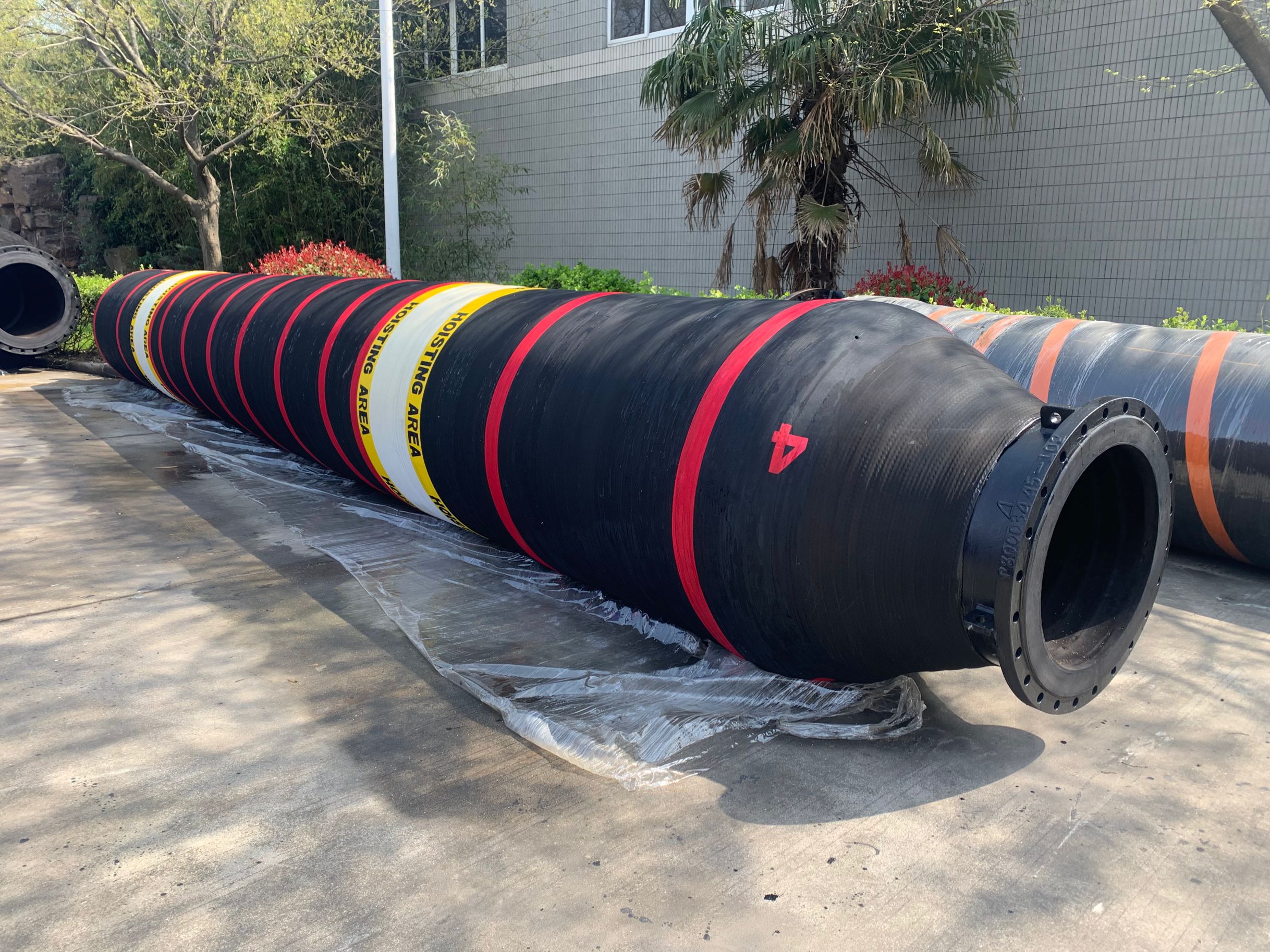
Illustrative image related to floating hose
7. How do floating hoses perform in extreme weather conditions?
Floating hoses are designed to withstand extreme weather conditions, including high winds, heavy seas, and UV radiation. Manufacturers often use advanced materials and construction techniques to enhance durability and flexibility. For operations in harsh environments, select hoses with reinforced linings and buoyancy features that maintain performance even under stress. Always consult with suppliers about the specific weather conditions expected in your operational area to ensure the selected hose meets safety and performance standards.
8. What certifications should floating hoses have for international trade?
For international trade, floating hoses should ideally be certified according to recognized industry standards, such as GMPHOM2009, which ensures they meet safety and performance criteria. Additionally, look for certifications that indicate compliance with environmental regulations and quality management systems, such as ISO 9001. These certifications not only enhance credibility but also demonstrate a commitment to quality and safety, which is crucial for B2B transactions. Always request documentation to validate these certifications during the sourcing process.
Top 7 Floating Hose Manufacturers & Suppliers List
1. Trelleborg – Flexible Floating Hose
Domain: trelleborg.com
Registered: 1996 (29 years)
Introduction: Flexible Floating Hose for Water Reclaim designed in accordance with GMPHOM2009 standard. Features include wear and tear resistance, reliability, and safety for extreme working conditions in the tailings process. The hoses are equipped with a wear-resistant liner and are produced using the latest technology and methods, backed by over 50 years of expertise in rubber material handling hoses.
2. Continental – Floating Hose
Domain: continental-industry.com
Registered: 2018 (7 years)
Introduction: Floating Hose – Standard is part of the Material Handling, Dredge & Mining Hoses category under Industrial Hoses by Continental Industry. It is designed for the storage and transport of liquids in dredging and seabed mining applications.
3. EZ Connect – Modular Floats for Hoses and Cables
Domain: ezconnectfloats.com
Registered: 2022 (3 years)
Introduction: EZ Connect Floats are patented modular one-size-fits-all floats designed to float hoses, pipelines, pipes, cables, and umbilicals. They are made of bright red polyethylene material for visibility and durability, resistant to wear in water and sunlight. The floats are reusable for any size diameter from 1 to 40 inches and can be easily installed with nylon straps and stainless-steel ratchets. They …
4. Zebung – Tanker Rail Floating Hose
Domain: zebungmarinehose.com
Registered: 2015 (10 years)
Introduction: Tanker Rail Floating Hose is designed for connecting with pipeline end manifolds (PLEMs) of a floating production storage offloading (FPSO) unit. Key features include: 1. Available in single and double carcass design 2. Rated working pressure of 21 bar 3. Minimum reserve buoyancy of 20% or as requested 4. Electrically discontinuous 5. Equipped with a reliable leak detection and indication system. …
5. VL Maritime – Floating & Submarine Hoses
Domain: vlmaritime.com
Registered: 2015 (10 years)
Introduction: Floating & Submarine hoses for oil loading and discharge operation manufactured to order meeting the GMPHOM 2009 Design, Manufacturing and Testing standards. Features include: Type of hose (Floating or Submarine), Amount of each type, Application (Main line, Tail, Tanker rail, Reducer), Carcass (Single or double), Primary carcass reinforcement (Polyester or steel wire cord), Pressure options (15 b…
6. JSDY Marine – Floating Dredging Hoses
Domain: jsdymarine.com
Registered: 2022 (3 years)
Introduction: Product Name: Floating Dredging Hoses
Usage: Used with dredgers for silt/gravels conveyance; suitable for mud, clay, fine sand, fine-mid sand.
Working Temperature: -20℃ to +50℃
Features: Buoyancy layer allows it to float; easier operation compared to discharge rubber hose, steel pipe, and HDPE pipe with PE floater.
Dimensions: Inner Diameter (ID) 100~1100mm; Length (L) 1000~11800mm.
Construction: …
7. Nanjing Deers – Floating Dredging Hoses
Domain: chinarubberfender.com
Registered: 2011 (14 years)
Introduction: Product Name: Floating Dredging Hoses
Manufacturer: Nanjing Deers Industrial Co., Ltd
Applications: Used with dredgers for silt/gravels conveyance; suitable for mud, clay, fine sand, fine-mid sand.
Working Temperature: -20℃ to +50℃
Product Features:
1. Outer cover with excellent abrasion resistance and UV protection.
2. Colored indicator layer.
3. Single foam flotation casing to prevent water abso…
Strategic Sourcing Conclusion and Outlook for floating hose
In the competitive landscape of floating hose procurement, strategic sourcing emerges as a critical factor in ensuring quality, reliability, and cost-effectiveness. Buyers must prioritize hoses that meet rigorous industry standards, such as GMPHOM2009, and are designed to withstand harsh operational environments, including extreme weather and mechanical stresses. By engaging with reputable suppliers who leverage advanced manufacturing technologies, businesses can secure products that not only enhance operational efficiency but also mitigate risks associated with hose failure.
Moreover, understanding the specific applications—ranging from petroleum transfer to dredging operations—enables buyers to make informed decisions tailored to their unique needs. As markets in Africa, South America, the Middle East, and Europe continue to evolve, the demand for innovative floating hose solutions is likely to rise.
Looking ahead, it is essential for international B2B buyers to adopt a proactive approach in their sourcing strategies. Collaborating with manufacturers who offer tailored solutions and robust support will be paramount in navigating the complexities of global supply chains. Seize the opportunity to elevate your operations by investing in high-quality floating hoses that ensure safety and efficiency.
Important Disclaimer & Terms of Use
⚠️ Important Disclaimer
The information provided in this guide, including content regarding manufacturers, technical specifications, and market analysis, is for informational and educational purposes only. It does not constitute professional procurement advice, financial advice, or legal advice.
While we have made every effort to ensure the accuracy and timeliness of the information, we are not responsible for any errors, omissions, or outdated information. Market conditions, company details, and technical standards are subject to change.
B2B buyers must conduct their own independent and thorough due diligence before making any purchasing decisions. This includes contacting suppliers directly, verifying certifications, requesting samples, and seeking professional consultation. The risk of relying on any information in this guide is borne solely by the reader.


